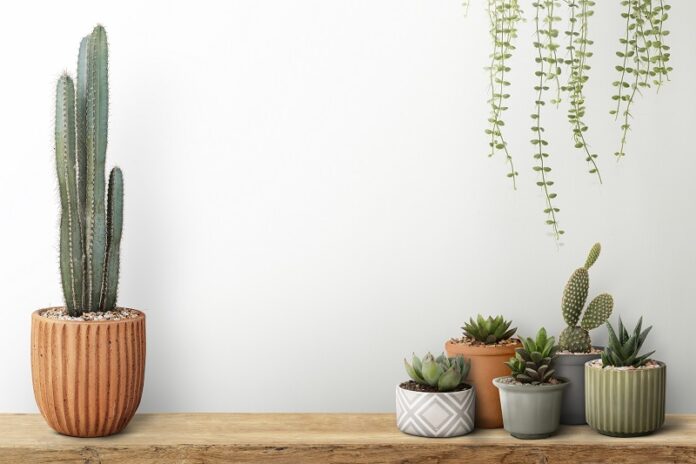Air pollution is a major global issue, with outdoor air quality being regularly monitored and regulated. However, we often overlook the importance of indoor air quality in our daily lives. According to the Environmental Protection Agency (EPA), indoor air can be up to five times more polluted than outdoor air.
This is concerning, considering the fact that most people spend up to 90% of their time indoors. Poor indoor air quality can have significant impacts on our health, including respiratory problems, allergies, and even chronic illnesses. In this blog post, we will discuss strategies for improving indoor air quality and creating a healthier living environment.
Identify the Sources of Indoor Air Pollution
The first step in improving indoor air quality is to identify the sources of pollution. Common sources include:
- Volatile organic compounds (VOCs) from household products such as cleaners, paints, and air fresheners.
- Mold and mildew growth due to excess moisture and poor ventilation.
- Dust mites, pet dander, and other allergens.
- Radon gas from soil under the home.
- Secondhand smoke from cigarettes and other tobacco products.
By identifying these sources, you can take targeted measures to reduce their impact on your indoor air quality. For example, using natural cleaning products or opting for low-VOC options when painting can significantly improve the air in your home.
Improve Ventilation
Optimal ventilation is vital for a healthy home. Opening windows regularly in less populated areas promotes fresh airflow, reducing harmful pollutants and moisture. High humidity zones benefit from exhaust fans or dehumidifiers to curb mold growth. Regular HVAC maintenance, filter replacement, and prompt professional attention for furnace repairs in Ogden ensure clean, circulating air. A well-maintained ventilation system guarantees comfort and easy breathing in your living space
Keep Your Home Clean and Clutter-Free
A clean and clutter-free home not only looks appealing but also contributes to better indoor air quality. Regularly dusting, sweeping, and vacuuming can help reduce the amount of dust and other allergens in your home. It’s also essential to keep bathroom and kitchen areas clean as these are common places for mold and mildew growth. Don’t forget to clean or replace air filters in your HVAC system and vacuum filters regularly.
Introduce Indoor Plants
Plants not only add aesthetic value to a home but also improve indoor air quality. They act as natural air purifiers by absorbing carbon dioxide and other toxins from the air and releasing clean oxygen. Some plants, like spider plants and peace lilies, are particularly effective in removing toxins such as formaldehyde and benzene from the air. Just make sure to research which plants are safe for indoor environments, especially if you have pets or small children.
Avoid Smoking Indoors
Smoking indoors is one of the most significant contributors to poor indoor air quality. Secondhand smoke contains over 7,000 chemicals, many of which are known to cause cancer. If you or a family member smoke, make an effort to do so outdoors and away from open windows or doors. Consider quitting smoking altogether for the sake of your health and the indoor air quality of your home.
Test for Radon
Radon is a colorless and odorless gas that can seep into homes through cracks and gaps in the foundation. Exposure to high levels of radon over time can increase the risk of lung cancer. The EPA recommends testing for radon every two years and taking necessary measures to reduce its levels if detected.
Use Natural Air Fresheners
Many commercial air fresheners contain harmful chemicals that can worsen indoor air quality. Instead, opt for natural alternatives such as baking soda, essential oils, or natural potpourri. These options not only add a pleasant scent to your home but also help absorb odors and improve air quality.
Invest in an Air Purifier
If you live in an area with high levels of outdoor air pollution or have family members with respiratory issues, investing in an air purifier may be beneficial. These devices work by trapping and removing pollutants from the air, improving overall indoor air quality. Be sure to research different models and choose one that suits your specific needs.
Conclusion
Indoor air quality is a crucial aspect of our overall health and well-being. By identifying sources of pollution, improving ventilation, keeping our homes clean, introducing plants, avoiding smoking indoors, testing for radon, using natural air fresheners, and investing in an air purifier, we can significantly improve the air we breathe indoors. Let’s take these steps to create a healthier living environment for ourselves and our loved ones.
After all, as the saying goes, “Health is not valued till sickness comes.” So let’s be proactive in taking care of our indoor air quality before it becomes a health issue. So remember to prioritize indoor air quality and make these strategies a part of your daily routine for a healthier, cleaner home.








